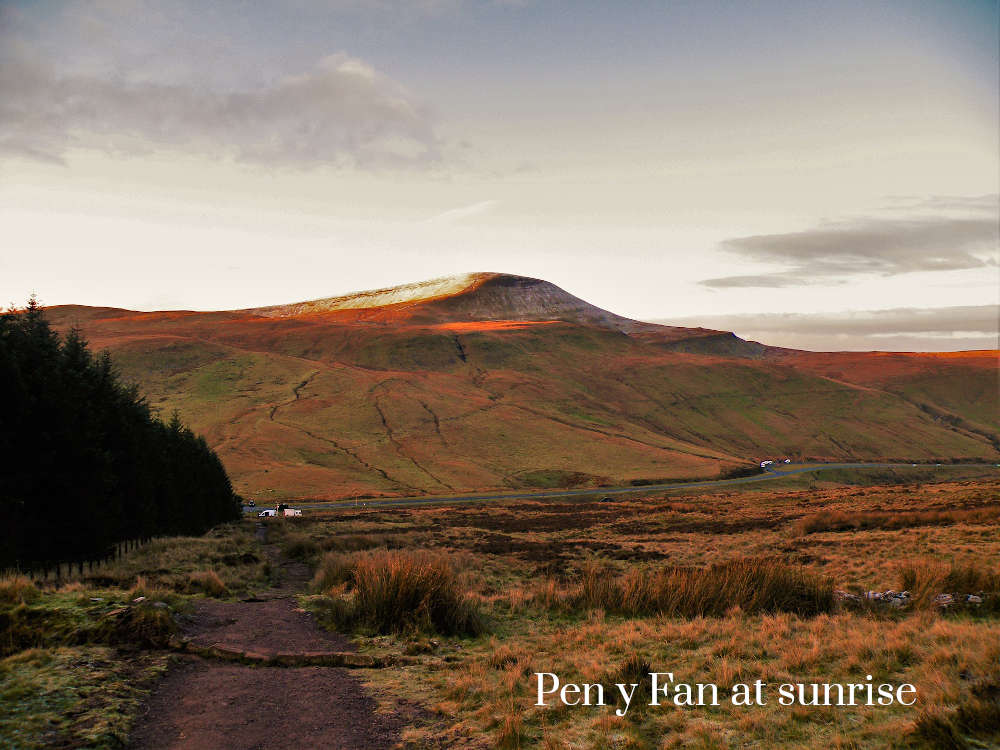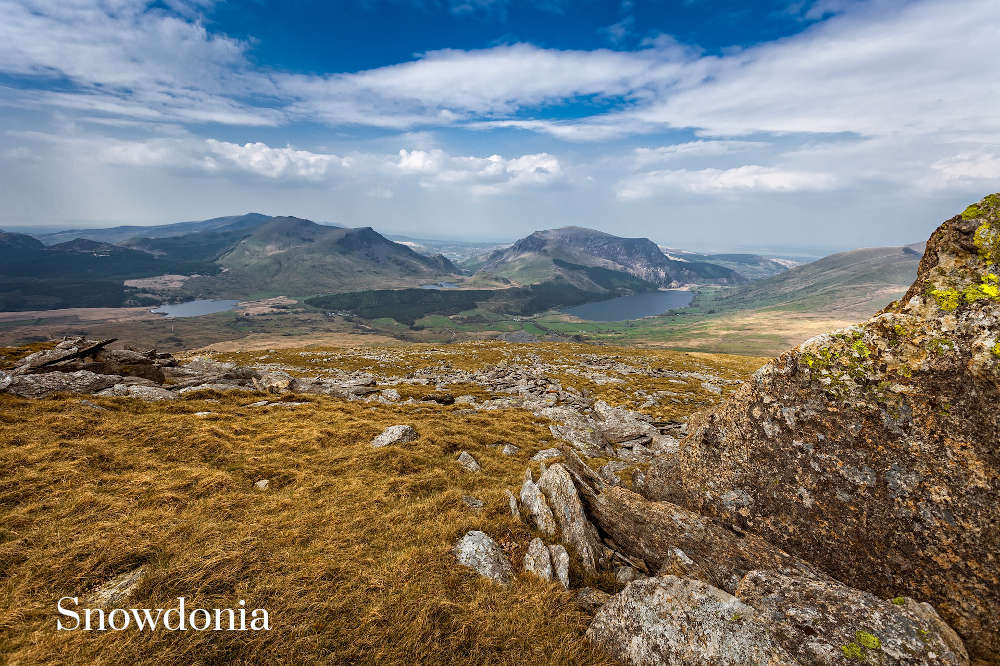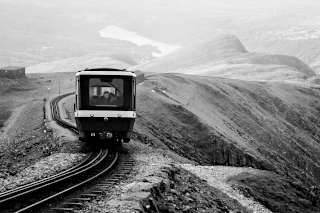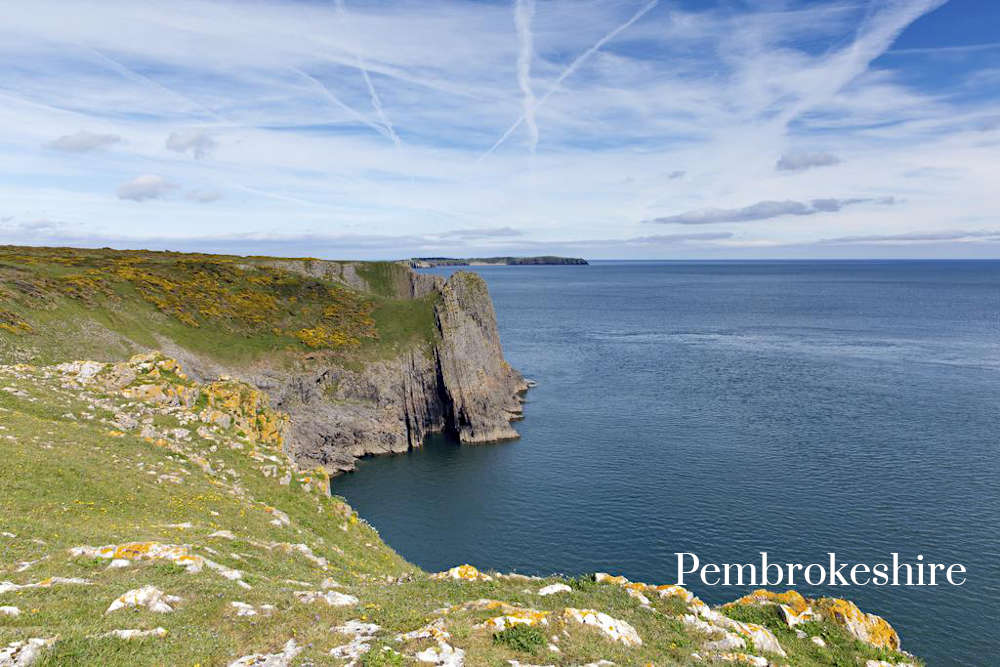Welsh National Parks
The Welsh national parks – Snowdonia, Pembrokeshire Coast and Brecon Beacons – cover an impressive 20% of Wales. They are perfect for active holidays, walking, cycling, mountain-biking, horse-riding, wild-swimming, but also ideal if you simply want to drive around on quiet country roads and soak up the outstanding views.

The most accessible park for people living in the southern half of England is the Brecon Beacons. The hills look softer and more rounded than other parts of Wales but make no mistake: when you reach the top of Pen y Fan or Cribyn (the highest points in the beacons) you will know you have had a good workout.
Wales is famous for its sheep, but here in the south of the principality it is the Welsh mountain ponies that crop the grass and keep the vegetation in check. They’re a hardy breed, said to be tougher than sheep – and less fussy eaters!
To the south, limestone pavements catch the light on half-sunny, half-cloudy days, while the west is a region of tilted rock, waterfalls and caves of such geological interest that in 2005 it was designated a Unesco Geopark. The caves at Dan yr Ogof bring visitors face-to-face with amazing rock formations and the echoing Cathedral Cave. Alternatively, settle in your seat on the Brecon Mountain Railway and take in the views as your trundle alongside Pontsticill and Taf Fechan reservoirs before climbing to Torpantau in the heart of the Brecon Beacons.

Snowdonia is everyone's mental image of Wales: wild mountains, high peaks and glacial lakes. It's all that and more!
Of course if you come to Snowdonia you must reach the summit of Snowdon itself. Over 1000m, on a clear day you can see to Pembrokeshire, the English Lake District and even Ireland. There are various routes up the mountain ranging from 'energetic' to 'really tough',  if any of those seem like too much, you can take the Snowdon Mountain Railway that chugs and rattles its way up and down throughout the summer. After Snowdon, there are dozens of other paths to follow and mountains to climb, most of them far quieter than the big one itself, so you may well have a mountain to yourself.
if any of those seem like too much, you can take the Snowdon Mountain Railway that chugs and rattles its way up and down throughout the summer. After Snowdon, there are dozens of other paths to follow and mountains to climb, most of them far quieter than the big one itself, so you may well have a mountain to yourself.
The history of Wales is scattered liberally across Snowdonia, ranging from the neolithic burial chamber at Capel Garmon to the rather more up-to-date hydroelectricity centre at Electric Mountain. Some of the world’s best medieval castles are clustered around the northern fringes of Snowdonia. The four mightiest – Beaumaris, Harlech, Caernarfon and Conwy – were built by Edward I (1272–1307) to subjugate the Welsh, partially successful, although this remains the most strongly Welsh-speaking part of Wales today.
More recent history has left its mark too. The massive slate industry of the 19th century has bequeathed the modern visitor a rather splendid legacy of steam railways, most notably the narrow-gauge Ffestiniog Railway. And not visit to Llanberis would be complete without a trip into the National Slate Museum (much more interesting than it sounds!).

The name says it all: Pembrokeshire Coast National Park. Jutting out into the Irish Sea, Pembrokeshire is a land of big cliffs and sandy beaches. There are family resorts like Tenby, contrasting with the most rugged parts of the 870 mile Wales Coast Path. That path offers walkers the chance to do short walks or long, linear or circular, steep or flat, and may lead you across gleaming sands or over clifftops with views to make the heart leap.
The national park is fantastic for wildlife-watching, too. From the first little bursts of warm weather in spring, the clifftops are alive with crickets and ladybirds. Every year, puffins and Manx shearwaters return to the islands of Caldey, Grassholm, Skokholm, Skomer and Ramsey to nest, while rabbits graze companionably and seals snooze in the sun. And occasionally, a pod of dolphins will come frolicking by. Even killer whales and basking sharks have been seen off this coast.
Walking is not the only activity in Pembrokeshire. Coasteering was invented here (so they say), and we can't praise enough the prospect of a boat trip out to Skomer Island when the puffins are breeding. Add in cycling, horse-riding on the beach, surfing, diving, fishing and climbing on the sea cliffs, and there really is something for everyone. Or to take things at a more sedate pace, just visit Pembroke Castle of Britain's smallest city, St Davids.
28 Sep 2021, 09:39